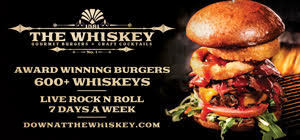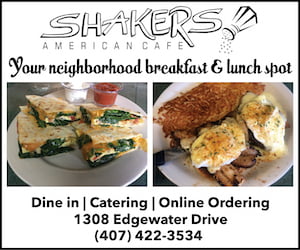This story originally appeared in the Orlando Sentinel February 13, 2008.
Atlantis , the ultra-chic dining room at Renaissance Orlando Resort at SeaWorld that has been closed for refurbishments since fall 2006, will not reopen — at least not as the formal restaurant it once was.
Its departure leaves Central Florida with one less special-occasion option for marriage proposals, anniversaries and Valentine’s Day (which, by the way, is Thursday, in case you haven’t made a reservation yet, and good luck with that).
Atlantis isn’t alone. Other restaurants that have closed or been turned into banquet-only facilities, most within the past two years, include Arthur’s 27, Maison et Jardin, Black Swan, Delfino Riviera and La Coquina.
Peter Hope, director of food and beverage at Renaissance Orlando, says the general dining public is looking for convenience and a faster dining experience, not the evening-long affair of a formal restaurant.
“I think that sort of thing is a thing of the past,” Hope said.
Kelly Cohen, 34, of Orlando, who says she dines out nearly every night, is among those who prefer a more casual dining experience. Cohen, who was dining at Hue, an upscale-casual restaurant in Thornton Park, likes the attention she gets in that sort of setting.
‘A real sense of community’
“What I find about some of the more casual dining restaurants,” she said, “is there’s a real sense of community. They kind of know who you are.”
Cohen said she still goes to fine-dining restaurants for a special occasion, but even then she prefers a steakhouse ambience.
Craig Ustler, president of Urban Life Management and an independent restaurant consultant, isn’t sure the death of fine dining is imminent, but he thinks the market is definitely trending in that direction.
“It’s certainly what we have in the short term,” he said.
Ustler, whose own restaurants include casual-dining concepts Hue, Citrus and Cityfish, doesn’t see it as unique to the Central Florida market.
“Clearly the trend I’ve seen in New York City and other cities I’ve studied is a trend away from formal and fine dining,” he said. He cites as an example the conversion of Atelier, the signature dining room at Manhattan’s Ritz-Carlton, to BLT Market, a green market-style bistro.
Jeans, not jackets
That’s not to say the movement away from formal dining means less-expensive restaurants. Rather, said Ustler, it’s a reflection of the current attitudes of the wealthy. The more youthful dot-com generation gravitates toward jeans and open collars, not jackets, ties and formalwear.
“There’s a trend toward money not being so formal,” Ustler said. “Restaurants just reflect these overall society trends.”
Hope said the Food Network also is partly to blame.
Guests like to watch chefs
“People want to be part of the process,” Hope said. Through television cooking shows, guests have become used to watching chefs in action, so more restaurants are being designed with open kitchens that allow some interaction between diners and cooks.
There’s also evidence that upscale-casual restaurants are more lucrative than the fine-dining sector, which in 2007 represented about $6 billion in revenue, according to Technomic Inc., a restaurant-market-research firm in Chicago. But Aaron Allen, president of Quantified Marketing Group, a Lake Mary company with an international clientele, says that while a fine-dining restaurant might do $2 million to $3 million of business a year, an upscale-casual restaurant could take in $7 million to $10 million.
Fine-dining spots still exist
But others say there is still a need for the posh experience, and formal dining is still offered at such local venues as Victoria & Albert’s, the Venetian Room, Manuel’s on the 28th, the Boheme and Norman’s.
John Askew, food and beverage director at Peabody Orlando, where Dux is the top-of-the-line restaurant, thinks there will always be a need for signature dining in a market the size of Orlando.
Still, he said the Dux staff’s uniforms were recently “softened” so that waiters who used to wear a jacket and tie now wear a vest and a shirt with a banded collar. And the restaurant, which once had a strictly enforced dress code for guests, now accepts any manner of dress, said Askew, “barring you show up in flip-flops and a bathing suit.”
But whatever the staff and guests are wearing, Dux will continue to offer high-fashioned food and service in an elegant atmosphere, Askew said. “We’re committed that room will be there.”










